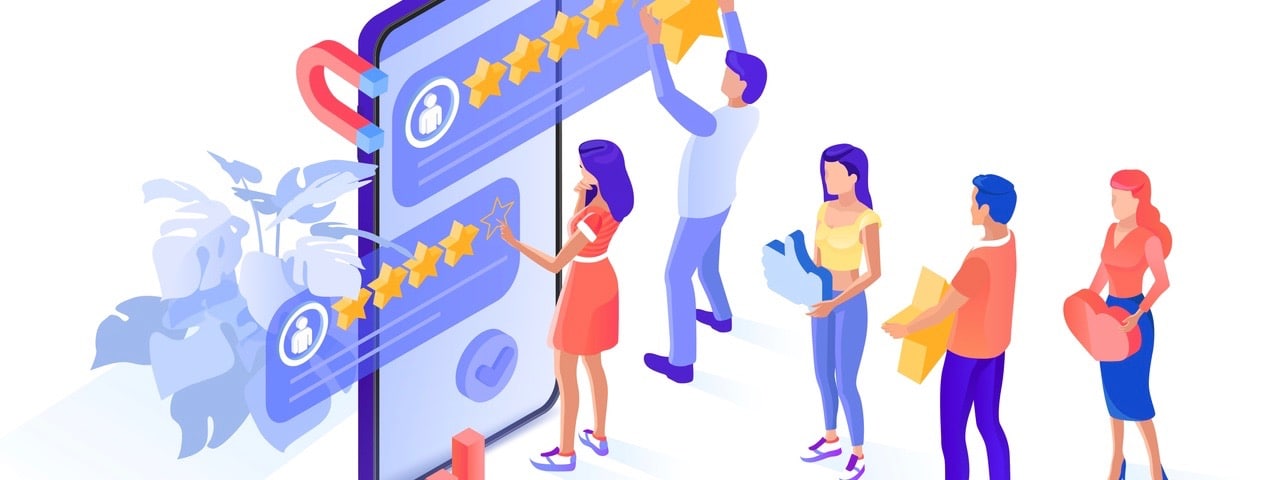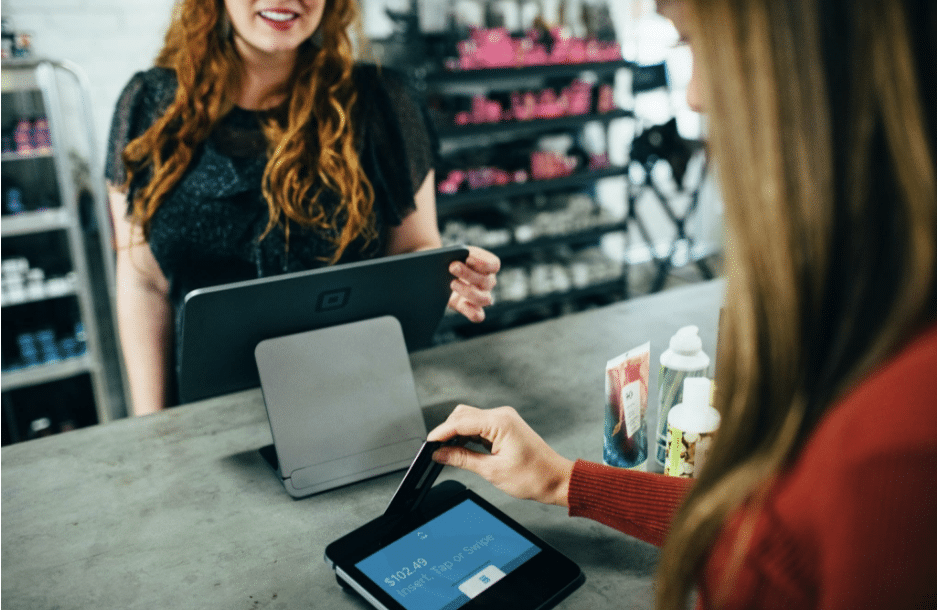Creating a reward system that stands out in the world of customer loyalty programs is a significant task for any business, and it can be a game-changing opportunity if done with care and accuracy. There’s a lot to consider whether you currently have a loyalty program that needs to be updated or are considering starting one for the first time.
Whatever category your business belongs in, this guide will teach you all you need to know about loyalty programs and management and get you started on the journey to stronger customer relationships.
What is a customer loyalty program?
A customer loyalty program is a rewards system offered by a business to customers who make recurring purchases. Loyalty programs provide free items, discount coupons, reward points, or early access to new products.
The goal of loyalty programs is to increase the number of brand-loyal clients. The ultimate goal of a loyalty program is to encourage customers to make regular purchases. As a result, you have to make sure you have the right loyalty program to keep your returning customers satisfied.
Market competition has grown as a result of the introduction of similar products. For that reason, it’s critical to stand out from the crowd and preserve your consumer base. Loyalty programs are essential for gaining a competitive edge. Loyalty programs lead to better customer retention, and customer retention has been found to increase profits by 25% to 95%.
Source: Unsplash
The most common loyalty program types are:
- Point-based loyalty program
- Tiered loyalty program
- Paid (VIP) loyalty program
- Value-based loyalty program
- Coalition loyalty program
- Game-based loyalty program
We will cover the top three loyalty program types.
1. Point-based loyalty program
This is perhaps the most widely used loyalty program strategy. Customers that shop often receive points, which can be exchanged for a discount coupon, a freebie, or another sort of special offer.
Keep the conversions straightforward and intuitive if you use a points-based reward program. Although it’s the most popular loyalty program, a points system isn’t appropriate for every type of business. It’s ideal for companies that promote frequent, short-term purchases.
2. Tiered loyalty program
Most firms that establish loyalty programs struggle to find a balance between achievable and appealing rewards. Implementing a tiered structure that rewards initial loyalty and promotes further purchases is one method to overcome this.
Present minimal prizes as a starting point for joining the program, and then gradually increase the value of the awards as consumers progress up the loyalty ladder. This eliminates the risk of members forgetting about their points due to a long purchase and fulfillment period.
3. Paid loyalty program
A one-time (or yearly) charge that allows customers to bypass typical purchasing barriers can benefit both the business and the client in some cases. In addition, you can tailor a fee-based loyalty program to address specific obstacles if you discover issues that may lead your consumers to leave.
Have you ever abandoned an online shopping basket after tax and shipping were calculated, for example? Unfortunately, this is a problem that many online companies face. To prevent that, you could offer a loyalty club similar to Amazon Prime, where consumers automatically receive free two-day shipping on orders after joining up and paying an upfront cost.
Ways to add value to your customer loyalty program
If your loyalty program does not provide value to your customers, it will not be long before they go to a competitor. Here are some ideas for making your loyalty program more valuable.
1. Connect with your clients
Via live and online surveys, you can get regular feedback from customers on the advantages of your loyalty program. Another approach to determine this is to compare what your consumers prefer to what you have to offer.
After a detailed study, you should get insight into what your clients want from your loyalty program and what kind of awards appeal to them the most.
2. Initial engagement reward
Make sure you reward new customers who interact with your brand. While most brands do this, they frequently overlook the need of finding discreet ways to remind customers of these points.
Customers can be rewarded for social media following or email opt-ins, for example. This allows you to target these new consumers with customized offers and reward redemption choices.
3. Reward your customers in a unique way
Most consumers receive a reward after they’ve made a purchase – usually in the form of free goods or a future discount. On the other hand, the ideal loyalty programs reward clients when they least expect it, so you can go ahead and give your client a unique extra point along with a personal birthday message.
Even better, send a simple “You’re Amazing!” email to a specific client group, coupled with free points. This would lift their spirits and provide good reinforcement for your brand. Of course, these are just a few ideas; aim to develop new ways to engage your consumers while keeping your brand image and business strategy in mind.
4. Offer creative reward options
If you want your loyalty program to stand out, it needs to provide more than just discounts and incentives. When you provide loyal consumers with a one-of-a-kind, unique service, it leaves a far more lasting and valuable impression than if you just give them something that they can get anyway.
And if you can tie that great experience to your brand identity, you’ve won the lottery with loyalty marketing!
How to build a loyalty program
Here’s a summary of each step to give you a better idea of how the whole process works:
Concept and business case
Always have your KPIs in mind when establishing the foundation of the loyalty program. A program created with a single exciting concept or just to mimic the competition is doomed to fail. As a result, the program concept must be based on a business issue or pain point.
Create and implement a plan
It’s time to put your plan into action once the concept phase is over. When it comes to arranging your plans into action, there are a few options to consider:
- Handling things on your own: The do-it-yourself method, in the case of a loyalty program, not only costs a lot of money and effort but also pushes your team to research how-tos, consumer habits, and UX trends. It will be a high cost unless you have a team of developers dedicated entirely to the program.
- Using a tool: Agencies can assist you in developing an enticing and personalized loyalty program from start to end and manage all marketing communications related to it. However, there is one con: this method is rather expensive.
- Implementing customer loyalty software: A loyalty platform is not only more cost-effective in the long term, but the development firms who built it also have the knowledge and technology to set up and manage your loyalty program exactly how you want it.
Launch and promote
A customer loyalty rewards program should be introduced in the same way a new product launch approaches. To put it another way, explain, demonstrate its benefits, and focus on it at all times. The following are the key criteria for launching a successful loyalty program:
- Define your goal
- Select a target audience
- Train your employees
- Make a strategy for communication
The metrics to measure your loyalty program
How do you know whether your loyalty program is a success? It has become increasingly important for marketers to demonstrate good ROI on loyalty programs as more firms focus on linking marketing efforts to revenue.
The following are the essential metrics to track to assess the performance of your customer loyalty program.
-
Customer Lifetime Value
Customer Lifetime Value (CLV) is the total revenue flow you can expect from a consumer throughout their engagement with your company. To measure the CLV, you first must measure the Customer Value.
Customer value is a customer’s estimation of how much a product or service is worth compared to the alternatives. Customer value is benefits – cost (CV = B – C) in a simple mathematical form.
Calculating the Customer Lifetime Value is as simple as multiplying the Customer Value by the average customer longevity. The problem is that determining a customer’s exact lifetime is difficult, especially if you’re a start-up company. However, three years is a good general rule to follow.
-
Redemption Rate
The Redemption Rate is a percentage that shows how frequently your consumers exchange their loyalty points. Your consumers are highly engaged with your loyalty program if you have a high redemption rate.
A good standard is a 25% redemption rate; anything less shows a problem with your loyalty program’s redemption process. In other words, your consumers are accumulating loyalty points but not using them.
-
Active Engagement Rate
This is similar to Redemption Rate in that it counts how many consumers are actively participating in your loyalty program (through points earned and redeemed).
-
Repeat Purchase Rate (RPR)
While CLV is a fantastic approach to assess your loyalty program’s long-term impact, the RPR provides an overview of the short-to-medium-term impact. The Repeat Purchase Rate (RPR) is a metric that measures the percentage of consumers who have made several purchases over a year.
One of the primary aims of a loyalty program is to promote repeat purchases; therefore, calculating the RPR is crucial for determining how effective a reward program is. Also, keep in mind that the RPR significantly influences the Customer Lifetime Value (CLV).
Conclusion
It takes more than a customer loyalty card and some points to build loyalty in today’s world. Your customer loyalty strategy should be based on what you know about them. Only then you can be able to effectively and efficiently reward and motivate new behavior.
Customer loyalty management directly impacts your company’s bottom line, retention, and capacity to expand. Therefore, get started by deciding which customer loyalty techniques you’ll employ and taking inspiration from the ideas listed in this article.









